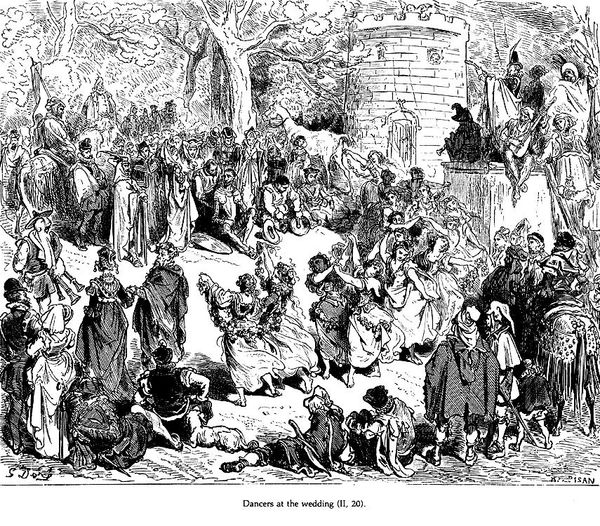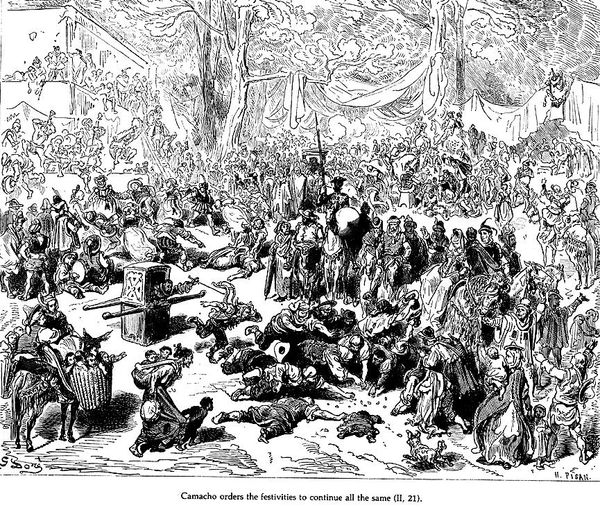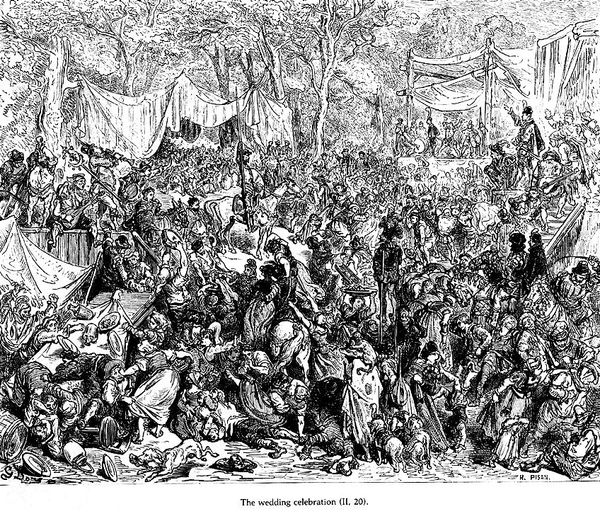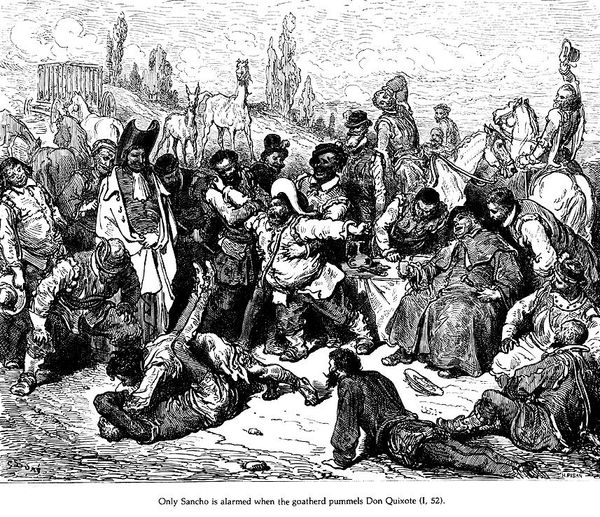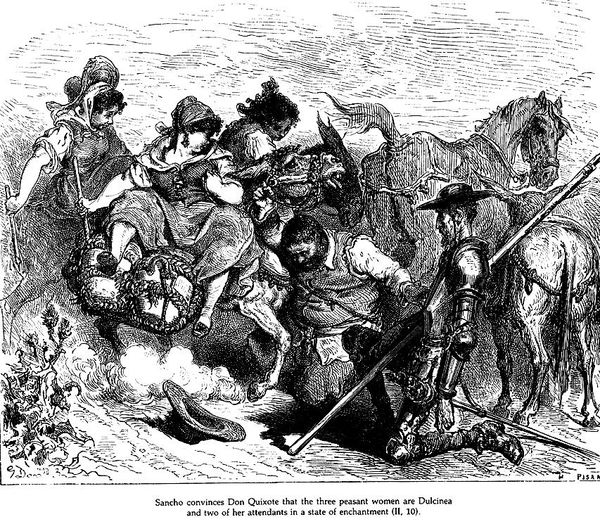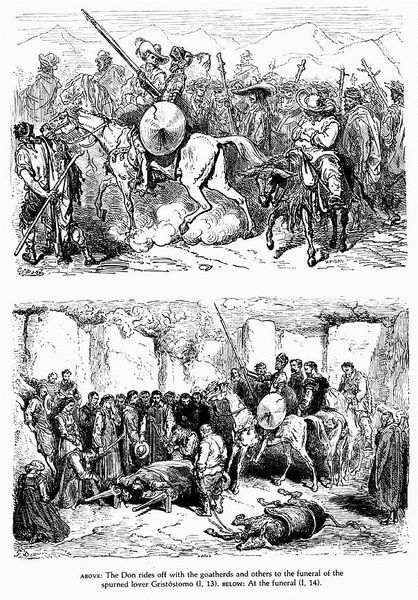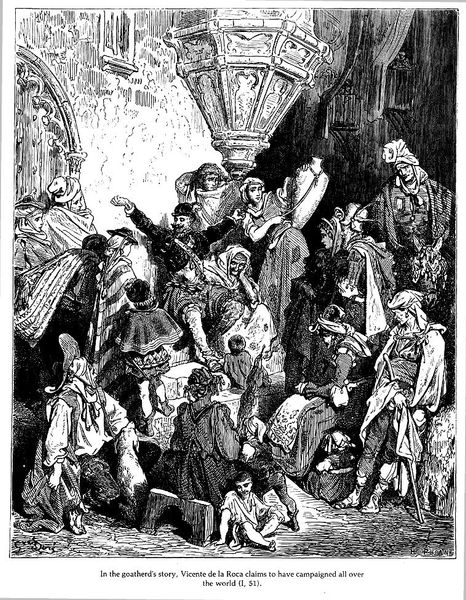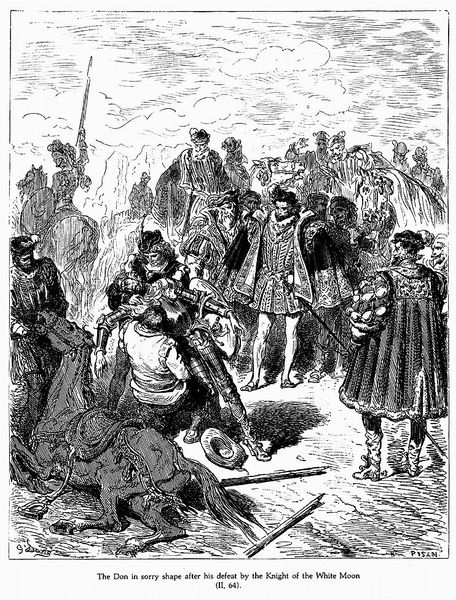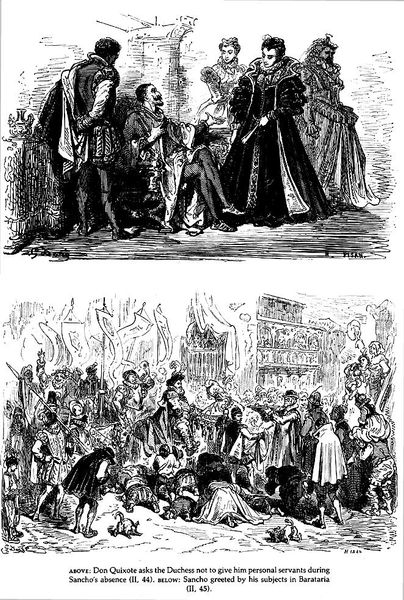
drawing, print, pencil, engraving
#
drawing
#
narrative illustration
#
narrative-art
# print
#
figuration
#
romanticism
#
pencil
#
line
#
genre-painting
#
history-painting
#
engraving
Copyright: Public domain
Editor: This drawing, entitled "Don Quixote" is an engraving by Gustave Doré. It’s incredibly detailed! The sheer number of figures crammed into the scene gives it a real sense of chaos and drama, almost theatrical. What do you see in this piece? Curator: It's crucial to consider Doré’s role as an illustrator within a rapidly changing media landscape. How did the mass production of images impact the perceived value and accessibility of art? "Don Quixote", divorced from its original publication, prompts questions about its public function and who it was meant to reach. The romantic style here seems pointed, especially given the book’s satirical themes; why depict a satire with such melodrama? Editor: That makes a lot of sense! The romantic style feels very performative; did that play into its reception by a wider audience? Curator: Absolutely. Romanticism was often deployed to elevate national myths and identities. How might Doré's illustrations contribute to the cultural capital of Cervantes' work, both in Spain and internationally? We need to consider who this "Don Quixote" was meant for – a high art audience, or a popular readership hungry for easily digestible imagery? And of course how it re-circulated nationalistic interpretations in different places. Editor: So the image doesn’t just show a story, but also actively participates in the story’s ongoing life and interpretation, maybe even influencing how we understand Spanish identity? Curator: Precisely. This engraving invites us to consider art not as isolated creation, but as a socially embedded phenomenon that gains meanings as it is circulated. Editor: This has given me a completely different perspective! It's amazing how one image can reveal so much about cultural and historical forces. Curator: Indeed. Thinking about art's journey through different contexts deepens our appreciation of both the work itself and the world it inhabits.
Comments
No comments
Be the first to comment and join the conversation on the ultimate creative platform.
